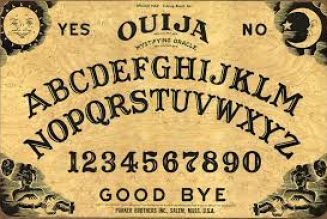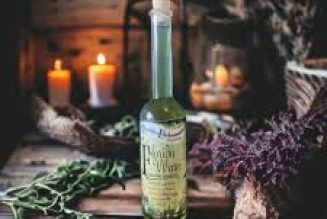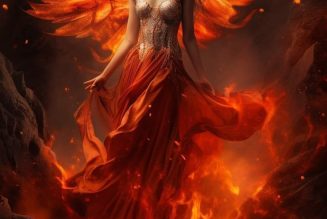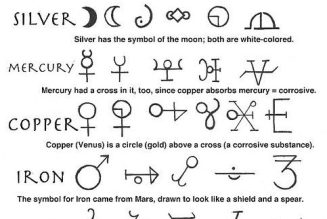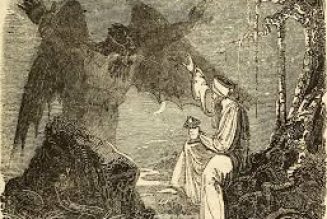The cauldron, like the broomstick and the black cat, is one of the features of any scene of witchcraft as pictured in the popular mind.
Some of the belief derives from Shakespeare’s play Macbeth, where the witches’ cauldron is introduced on the stage, with its accompanying dances and incantations.
Actors regard Macbeth, because of the witch-scenes in it, as an unlucky and uncanny play.
However, the connection between the cauldron and witchcraft dates back to a long time before Macbeth; back, in fact, to the days of Ancient Greece.
Greek legend contains the story of Medea, the witch of Colchis, whom Jason married in the course of his search for the Golden Fleece.
Medea was a priestess of Hecate, the goddess of the moon and of witchcraft; and not only did she have a cauldron, but she also had a coven too.
According to Robert Graves in his Greek Myths (Penguin Books, London, 1957 and Baltimore, Maryland, 1955), Medea was attended by twelve Phaeacian bond-maidens, who assisted her in her horrible plot to kill King Pelias with the aid of her magic cauldron.
In Ancient Britain and Ireland magical cauldrons featured largely in religious mysteries.
Heroes went into strange enchanted realms of the Other World to win a wonderful cauldron as a prize for their adventures.
It is the writer’s belief that a far-off echo of this survives in folk-memory as the custom of giving ornamental cups, usually of gold or silver, as the reward for sporting contests.
The delirious excitement of the Cup Final, when the victorious team raises the great, shining, hard-won Cup to the cheering crowd, has its origin far off in ancient myth.
The transformation of the cauldron into a cup is evidenced by the legends of the Holy Grail, which has its roots in pre-Christian Celtic myth.
With the coming of Christianity, the Cauldron of Inspiration and Rebirth, for which Arthur and his followers sought in perilous and uncanny realms of the shades, as sung of in bardic poetry, became the Holy Grail, for which the Knights of the Round Table rode forth upon the quest.
The witches, however, kept the old pagan version, and the cauldron, originally that of the Druidic moon goddess Cerridwen, became their symbol.
A cauldron is an all-embracing symbol of Nature, the Great Mother. As a vessel, it represents the feminine principle. Standing upon three legs, it recalls the triple moon goddess.
The four elements of Life enter into it, as it needs fire to boil it, water to fill it, the green herbs of earth to cook it, and its fragrant steam arises into air.
The cauldron in fact represented a great step forward in civilization.
Before man was able to make metal cooking pots, which would withstand fire, they had to be content with thick earthenware pots, which were heated by the laborious process of dropping very hot stones into them.
The metal cauldron, over which the woman as head of the household presided, gave men better-cooked food, more plentifiul hot water to cleanse themselves,
